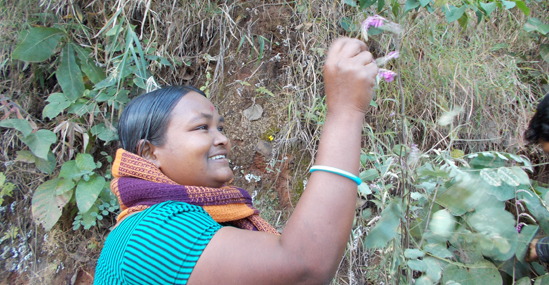– Vnadna Tete
The Story of Tea Plantations, in the Voices of Adivasis
Tea holds a very special place in our everyday lives. Whether it is to start the morning, to take a short break during work, or to sit with a friend for a heartfelt conversation, tea has become an integral part of our routine. It is not merely a beverage but also a cultural symbol that strengthens social bonds and adds freshness to our daily experiences. Yet, very few of us pause to think about how this tea reaches our table and at what cost. We enjoy its flavour and aroma, but seldom do we acknowledge the immense labour, hardship, and socio-economic struggles that are hidden behind every cup.
This neglected reality has been brought to light by Kuldip Singh Bampal in his significant study “Chai Bagan ki Kahani, Adivasiyon ki Jubani” (The Story of Tea Plantations, in the Voices of Adivasis). The book does not limit itself to the process of tea production; it focuses on the lives of the Adivasi communities who have been working in tea plantations for generations. Through this work, the author takes us deep into their struggles, aspirations, and untold stories.
The tea industry has long held an important place in India’s economy and cultural imagination. Vast plantations stretch across Assam, Darjeeling, the Doon Valley, and parts of South India. A significant share of plantation workers comes from Adivasi communities, many of whom were brought here during the colonial period, often forcibly or through deceptive promises. These include Santhals, Oraons, Mundas, Gonds, and several other groups. Over time, they became inseparable from the life of tea plantations, yet their own culture, languages, and traditions were gradually pushed to the margins.
Bampal’s study brings this historical background to the forefront. He shows how plantation workers were not only economically exploited but also socially and culturally marginalised. Low wages, strenuous labour, unhealthy living conditions, and the lack of access to education and healthcare continue to define their lives even today.
What makes this book stand out is that it is not just a collection of statistics or formal research findings. It gives voice to the workers themselves, whose experiences are rarely heard in mainstream discourses of “development” and “industry.” Bampal has used direct conversations and first-hand accounts to weave the narrative. This lends the book a unique vitality, transporting the reader straight into the world of plantation workers.
The glimpses into Adivasi life compel us to reflect on how much unseen labour goes into sustaining our daily comforts. In every cup of tea, along with its fragrance and taste, there lingers the sweat and toil of Adivasi men and women who bend for hours under the scorching sun, plucking leaves tirelessly. Their hardship is not merely physical but also social and psychological, as they continue to carry the weight of generations of neglect and exclusion.
Importantly, Bampal’s work does not reduce Adivasi life to a tale of exploitation alone. He also highlights their resilience, cultural vitality, and collective strength. Despite adverse conditions, these communities continue to preserve their traditions, songs, dances, and social solidarity. By including these aspects, the book reminds us that Adivasi life is not only about suffering but also about survival, creativity, and dignity.
This perspective is especially valuable in the context of contemporary debates on Adivasiyat (Adivasi identity). Adivasiyat is not merely a matter of geography or culture, but also a political and social question. To talk about Adivasis is to talk about the margins of society, from where mainstream “development” extracts its resources. In the case of tea plantations, this debate becomes sharper, because here the lives of Adivasi communities are directly linked to our everyday consumption.
From a literary standpoint, the book is written in simple, lucid language. It does not burden the reader with excessive academic jargon. Instead, it presents vivid examples and lived experiences, making the text engaging and accessible. This quality ensures that the book appeals not only to scholars of sociology and anthropology but also to any sensitive reader who wishes to understand the realities of marginalised communities.
In today’s age of global consumerism and market-driven lifestyles, it is crucial to reflect on the hidden stories behind the products we consume. This book reminds us that tea is not only a matter of taste and comfort but also a reminder of the invisible hands that make it possible. In that sense, Kuldip Singh Bampal’s work is not just a book, but a document that stirs our conscience and urges us to adopt a more humane perspective.
To conclude, “Chai Bagan ki Kahani, Adivasiyon ki Jubani” is not merely about the untold stories of plantation workers; it also reveals the deeper layers of our society that often remain unseen. It connects issues of labour, culture, history, and social justice, and forces us to question whether we are truly fair to those on whose hard work our everyday life depends.
This is why the book is important not only for researchers and students but for anyone who seeks to understand the real structure of our society. It offers us not just a sip of tea but also a sip of awareness – an awareness that blends the bitter-sweet truths of labour, struggle, and Adivasi self-rule.
You can oreder your copy at :
https://www.amazon.in/-/hi/Kuldip-Singh-Bampal/dp/B0DXY71RDM




